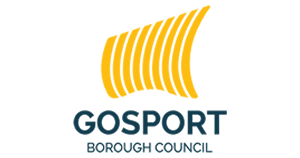Gilkicker Heritage

Introduction
Gilkicker is an unspoilt stretch of the Hampshire coastline and is one of a number of areas of nature conservation value within the Borough of Gosport. Until 1974, most of the area was owned by the MOD. The 110 acre area is now owned by the Borough Council and contains two important features of local heritage interest:
(1) Gilkicker Lagoon- A Site of Special Scientific Interest (SSSI - designated by English Nature)
(2) Fort Gilkicker - A Scheduled Ancient Monument. (English Heritage)
It is also a Countryside Heritage site (Hampshire County Council), which recognises the area's historic coastline, landscape and nature conservation value. Gilkicker has special interest for bird watchers, being a feeding station for many migrating birds in spring and autumn. The plant life is also rich with sea kale, yellow horned poppy and thrift, which in turn attract large numbers of insects. Gilkicker is mostly open to the public; the map overleaf highlights the points of interest.
Fort Gilkicker
Fort Gilkicker was built between 1863 and 1871 as part of Lord Palmerstone's fortifications of Portsmouth Harbour against the French. The building itself is semicircular facing out to sea, and contains vaulted ammunition stores, stairways and barrack blocks with earthbank revetments.
The Coastguard station now stands on top of the Fort and is not open to the public. The building itself was designated a Scheduled Ancient Monument in 1985; this ensures it is protected by the Department of the Environment.
The Lagoons
The Lagoons at Gilkicker are a Site of Special Scientific Interest (SSSI). Their saltiness creates a harsh environment where species have had to adapt to survive. Five species of mollusc of national rarity live in the lagoons, and even the concrete blocks around the edge provide a valuable habitat for invertebrates.
The Lagoons are replenished each tide by a direct link through the shingle from the sea. Wildfowl including Brent Geese feed in this area.
The Shore
Gilkicker has a shingle beach, which is constantly being worked by the sea. If you walk on the beach you will appreciate the difficulties that plants and animals have surviving in such a hostile environment. Even shells are smashed by wave action.
The tide-line is populated by invertebrates and their predators. Dunlin, black-headed gulls and common tern feed in the area.
Jellyfish are often stranded on the beach, especially after severe storms. The remains of cuttlefish are found in early summer.
Further inshore, the shingle is colonised by specialised plants: including yellow horned poppy, thrift, sea beet and sea kale. The blueish leathery leaves of the sea kale help protect the plant from the effects of salt drying.
Other Habitats
Inland there are 2 main wetland areas, one containing the largest known population in Southern England of dotted sedge, as well as sea rush and marsh willowherb. Birds like reed bunting and mallard can use these relatively secluded areas for nesting. The earth mound is formed from infil and marks the westerly border of the Countryside Heritage Site, given in recognition of Gilkicker's coastal heritage. Areas of unimproved grassland occur, with herb species like wild carrot, silverweed and fennel.
Kestrels are frequent visitors, hovering over the grassland while hunting.
The gorse and bramble provide valuable cover for small mammals and nesting sites for birds among them stonechats, skylarks and pipits.




